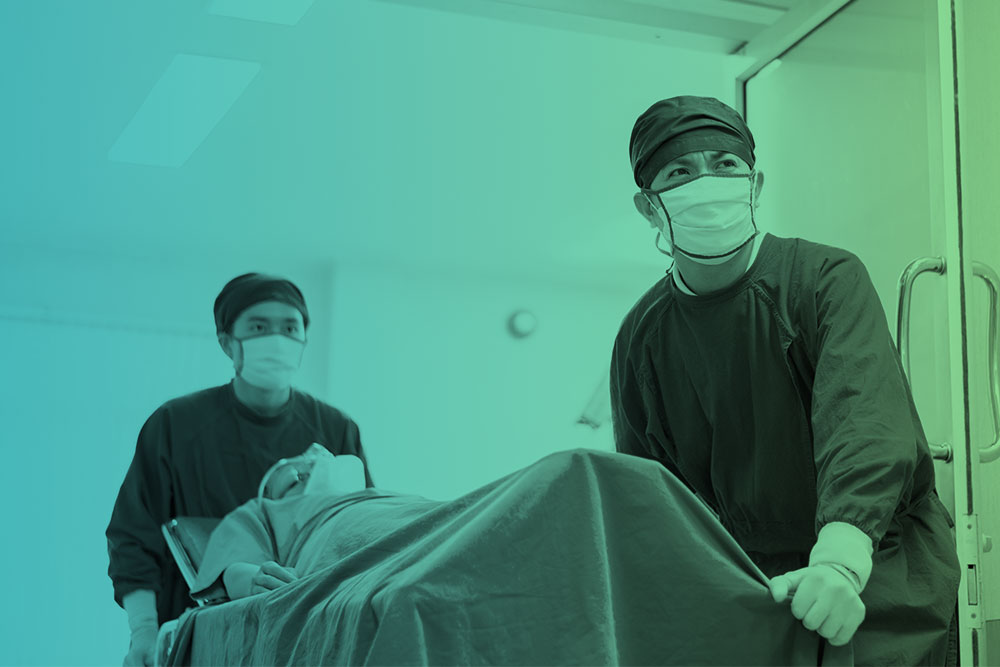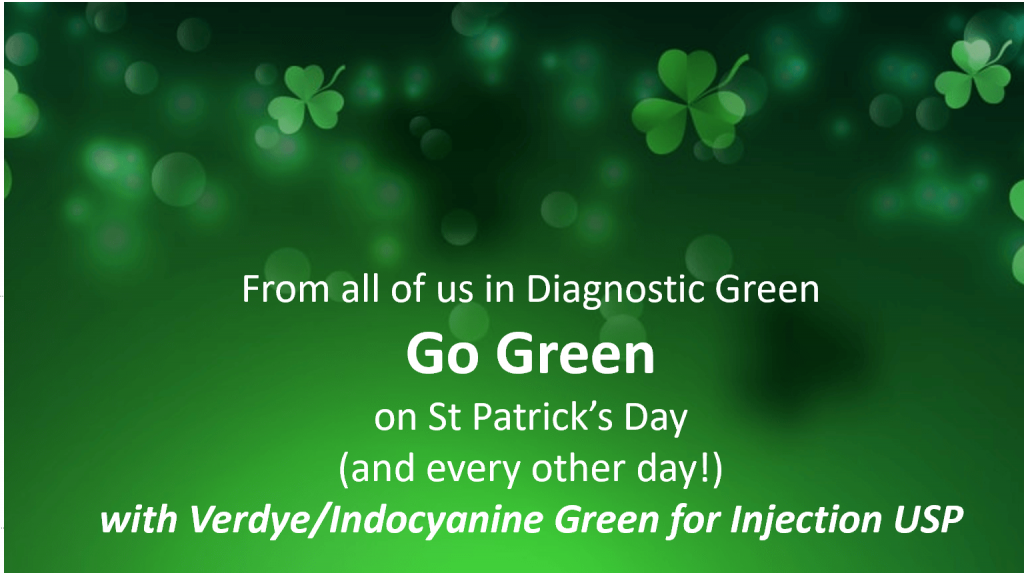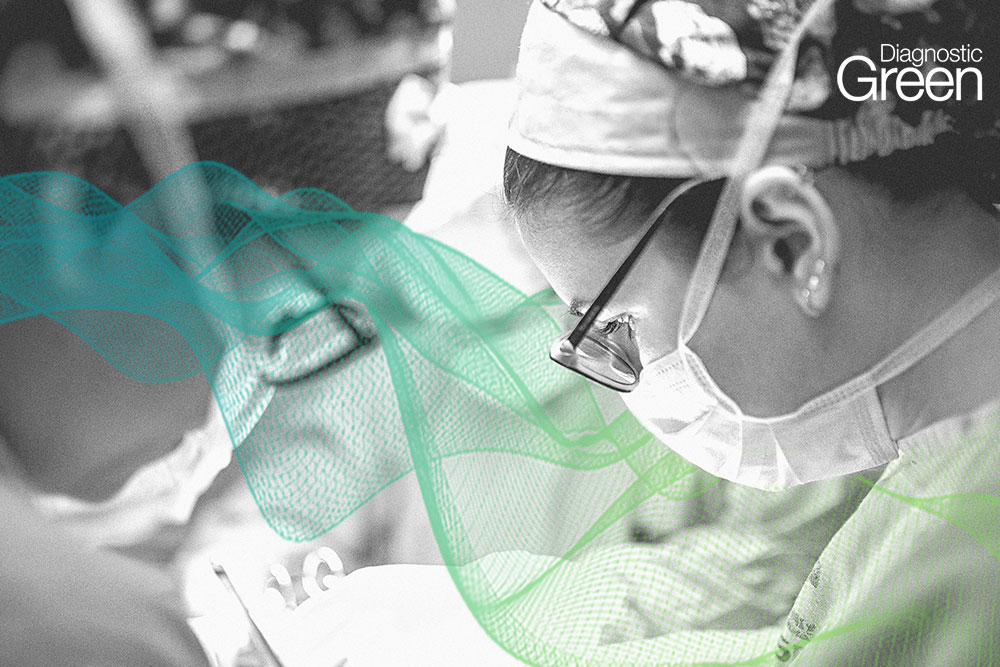The application of indocyanine green fluorescent could be a useful tool during the surgical management of biliary fistulas and gallstones, focused on improving the visualization of structures and decreasing the risk of injury. Gallstone ileus is a mechanical obstruction secondary with one or more biliary stones in the small bowel or any part of the gastrointestinal tract; the stone passes through a biliary tract´s fistula. This stone obstructs the distal ileum and the ileocecal valve in 50%–75% of the occasions, and just 4% obstructs the outlet gastric tract. We present a case of a gallstone ileus patient, where we describe the application of the indocyanine green fluorescence that could help reduce common bile duct injuries and improve the therapeutic of these patients.
Quantification of gastric tube perfusion following esophagectomy using fluorescence imaging with indocyanine green
Anastomotic leakage (AL) remains a prevalent and life-threatening complication after esophagectomy. Gastric tube perfusion assessment using indocyanine green fluorescence imaging (ICG-FI) has been published in several studies and appears to be a promising tool to reduce AL rates by changing the surgical approach, namely by an intraoperative evaluation of the anastomosis localization.
In this study, gastric tube perfusion was quantified by using ICG-FI in 20 high-risk patients undergoing esophagectomy. From a time-dependent fluorescence intensity curve, the following three parameters were evaluated: slope of fluorescence intensity (SFI), background subtracted peak fluorescence intensity (BSFI), and time to slope (TTS). The values between pyloric region and tip showed a similar downward trend and SFI and BSFI significantly correlated with the distance to the pyloric region. SFI and BSFI were significantly decreased at the tip of the gastric tube. The placement of anastomosis in an area with homogenous fluorescence pattern was correlated with no AL in 92.9% of cases. An inhomogeneous fluorescence pattern at anastomotic site was a risk factor for the occurrence of an AL (p < 0.05). Reduction of perfusion up to 32% using SFI and up to 23% using BSFI was not associated with AL.
Conclusion: ICG-FI can be used to quantify the gastric tube perfusion by calculating SFI, BSFI, and TTS. The anastomosis should be created in areas with homogeneous fluorescence pattern. A reduction in blood flow of up to 32% can be accepted without causing an increased rate of insufficiency.
Role of fluorescence imaging for intraoperative intestinal assessment in gynecological surgery: a systematic review
Our aim was to review the current knowledge of the role of fluorescence imaging for intraoperative intestinal assessment in gynecological surgery.
Material and methods: A computer-based systematic review was performed from 2000 to 2020. All articles describing the use of indocyanine green (ICG) applied to bowel assessments in gynecology or endometriosis surgery were considered for review.
Results: ICG is an effective tool for assessing bowel vascularization, potentially preventing anastomotic leakage and recto-vaginal fistula and can therefore be useful for endometriosis surgery or bowel assessment in gynecological oncology procedures. Real-time characterization of the hypovascular pattern of endometriotic nodules has been associated with a larger nodule size and lower microvessel density, helping surgeons choose the best transecting line and the most appropriate technique. ICG angiography allows for a laparoscopic and intrarectal bowel assessment, which can act as a double check of bowel perfusion, enabling the assessment of mucosa vascularization. ICG fluorescence can guide intraoperative decision-making after intestinal anastomosis, discoid resection, and rectal shaving, preventing anastomotic leakage and postoperative recto-vaginal fistula in low anterior resections.
Conclusions: ICG angiography provides a better intestinal assessment. Larger, prospective, randomized controlled studies are needed to validate the technique and confirm these encouraging results.
Utility of indocyanine green videoangiography with FLOW 800 analysis in brain tumour resection as a venous protection technique
In regard to central nervous system tumour resection, preserving vital venous structures to avoid devastating consequences such as brain oedema and haemorrhage is important. However, in clinical practice, it is difficult to obtain clear and vivid intraoperative venous visualization and blood flow analyses. We retrospectively reviewed patients who underwent brain tumour resection with the application of indocyanine green videoangiography (ICG-VA) integrated with FLOW 800 from February 2019 to December 2020 and present our clinical cases to demonstrate the process of venous preservation. Galen, sylvian and superior cerebral veins were included in these cases. Clear documentation of the veins from different venous groups was obtained via ICG-VA integrated with FLOW 800, which semiquantitatively analysed the flow dynamics. ICG-VA integrated with FLOW 800 enabled us to achieve brain tumour resection without venous injury or obstruction of venous flux. ICG-VA integrated with FLOW 800 is an available method for venous preservation, although further comparisons between ICG-VA integrated with FLOW 800 and other techniques of intraoperative blood flow monitoring is needed.
https://bmcsurg.biomedcentral.com/articles/10.1186/s12893-022-01573-4
Effect of Indocyanine Green Fluorescence Angiography on Anastomotic Leakage in Patients Undergoing Colorectal Surgery: A Meta-Analysis of Randomized Controlled Trials and Propensity-Score-Matched Studies
Background: Meta-analyses have demonstrated that indocyanine green (ICG) can effectively prevent anastomotic leakage (AL) after colorectal surgery. However, recent evidence from large randomized controlled trial (RCT) has suggested that ICG fluorescence angiography does not reduce the incidence of AL in colorectal surgery. This study was conducted to evaluate the value of ICG for the prevention of AL following colorectal surgery.
Results: Twenty studies (5 RCTs and 15 PSM studies) with a total of 5,125 patients were included. ICG did not reduce the reoperation rate (OR, 0.71; 95% CI, 0.38, 1.30), conversion rates (OR, 1.34; 95% CI, 0.65, 2.78), or mortality (OR, 0.50; 95% CI, 0.13, 1.85), but ICG did reduce the incidence of AL (OR, 0.46; 95% CI, 0.36, 0.59) and symptomatic AL (SAL) (OR, 0.48; 95% CI, 0.33, 0.71), and reduced the length of hospital stay (MD,−1.21; 95% CI,−2.06,−0.35) and intraoperative blood loss (MD,−9.13; 95% CI,−17.52,−0.74). In addition, ICG use did not increase the incidence of total postoperative complications (OR, 0.93; 95% CI, 0.64, 1.35), postoperative ileus (OR, 1.26; 95% CI, 0.53, 2.97), wound infection (OR, 0.76; 95% CI, 0.44, 1.32), urinary tract infection (OR, 0.87; 95% CI, 0.30, 2.59), pulmonary infection (OR, 0.23; 95% CI, 0.04, 1.45), urinary retention (OR, 1.08; 95% CI, 0.23, 5.04), anastomotic bleeding (OR, 1.53; 95% CI, 0.27, 8.60), anastomotic stricture (OR, 0.74; 95% CI, 0.24, 2.29), or operative time (MD,−9.64; 95% CI,−20.28, 1.01).
The meta-analysis showed that ICG can effectively reduce the AL rate, SAL rate, blood loss, and hospital stays, without prolonging the operation time or increasing postoperative complications in colorectal surgery. …We found that ICG use was associated with a reduced incidence of SAL. Previous studies have shown that the incidence of AL is related to the position of the anastomotic, and the lower the position, the higher the risk of AL (23, 47). Therefore, the trial of low anterior resection was used as a subgroup in this study, and the results of subgroup analysis showed that ICG could effectively reduce the incidence of AL in this high-risk population. Similarly, a retrospective study by Jafari et al. (15) found that the risk of AL in robot-assisted rectal surgery was reduced to 6% in the ICG group, compared with 18% in the control group.
Conclusions: ICG can effectively reduce the incidence of AL, without prolonging the operation time or increasing postoperative complications in colorectal surgery.
https://www.frontiersin.org/articles/10.3389/fsurg.2022.815753/full
Go Green!
Use of indocyanine green fluorescence angiography during ileal J-pouch surgery requiring lengthening maneuvers
Background: The purpose of this study was to review whether routine usage of indocyanine green (ICG) perfusion assessment during complex ileal J-pouch surgery requiring lengthening maneuvers reduces ischemic complications.Retrospective chart review of patients with ulcerative colitis (UC) or familial adenomatous polyposis (FAP) who underwent ileal pouch-anal anastomosis (IPAA) surgery with lengthening maneuvers and intraoperative ICG assessment between January 2015 and January 2021.
One hundred fifty eight patients underwent ileal J-pouch surgery during the study period. Sixteen patients (10%) underwent lengthening maneuvers and intra-operative ICG assessment. Twelve patients underwent surgery for UC and 4 for FAP. Median age was 40.3 years and average body mass index was 24.9 kg/m2. Twelve patients underwent a two-stage procedure and the remaining underwent a three-stage procedure. 93.7% of cases were completed laparoscopically (15/16). All patients underwent scoring of the peritoneum and 43% (7/16) underwent division of the ileocolic or intermediate mesenteric vessels. There was no mortality or pouch ischemia and the leak rate was 12.5%. All patients underwent reversal after an average of 18 ± 7 weeks.
Conclusion: ICG perfusion assessment appears to be of utility in complex IPAA surgery requiring lengthening maneuvers. Its application may be associated with reduced J-pouch ischemia and leak rate in this unique setting.
The Most Powerful Tool for Bringing Back Patients Is Literally at Hand — Ron Harman King says “trying times call for trying new things”
In this video, healthcare marketing expert Ron Harman King discusses the potential for using smartphones to attract and keep patients in your practice.
Vistamerica announced the approval of VistaVerde ICG in Mexico
ICG now approved in Mexico – Vistamerica announced the approval of VistaVerde ICG in Mexico: Available on market in October 2020
Puerto Peñasco, Sonora. August 20, 2020. Vistamerica S de RL is proud to announce that VistaVerde ICG has been approved by the Federal Committee for Protection from Sanitary Risks (COFEPRIS) in Mexico. Vistamerica has exclusive distribution rights for Indocyanine Green (ICG) for the entire territory of Mexico, with plans set to enter the market in October 2020.
ICG, produced by Michigan based Diagnostic Green LLC, the leading provider of trusted high-quality fluorescence pharmaceutical products, is well known and accepted by physicians worldwide. Indicated for use in determining cardiac output, hepatic function and liver blood flow, and for ophthalmic angiography, ICG is well tolerated and has an excellent safety profile. It is routinely used by physicians during fluorescent guided surgery.
“We are delighted to engage with such a dedicated and enthusiastic company that will ensure ICG will be available to physicians throughout Mexico”, stated Ron Clarke, VP Business Development at Diagnostic Green.
Vistamerica cofounder and owner Catalina Markham similarly expressed, “We are excited to offer ICG in Mexico. It is quickly becoming the standard of care during fluorescent guided surgery and we are anxious to continue providing excellent service with cutting-edge products to benefit physicians and patients alike.”
For full prescribing details, contact Vistamerica.
Vistamerica S de RL Sinaloa Avenue No. 183-3, South Center, 83550, Puerto Peñasco, Sonora, Mexico.
Office: + 52-638-38-88668, Info@vistamerica.net.
VistaVerde
Verde de Indocianina
ICG ahora aprobado en México – Vistamerica anunció la aprobación de VistaVerde ICG en México: Disponible en el mercado en octubre del 2020
Puerto Peñasco, Sonora, 20 de agosto, 2020. Vistamerica S de RL (Vistamerica) se enorgullece de anunciar que VistaVerde ICG ha sido aprobado por la Comision Federal de Protección contra Riesgos Sanitarios (COFEPRIS) en México. Vistamerica tiene los derechos exclusivos de distribución de Indocyanine Green (ICG) para todo el territorio de México, con planes para ingresar al mercado en octubre del 2020.
ICG, es producido por Diagnostic Green LLC, con sede en Michigan, proveedor líder de productos farmacéuticos de fluorescencia de alta calidad de confianza, es bien conocido y aceptado por médicos de todo el mundo. Indicado para su uso en la determinación del gasto cardíaco, la función hepática y el flujo sanguíneo hepático, y para la angiografía oftálmica, el ICG se tolera bien y tiene un excelente perfil de seguridad. Los médicos lo utilizan habitualmente durante la cirugía guiada por fluorescencia.
“Estamos encantados de colaborar con una empresa tan dedicada y entusiasta que garantizará que ICG esté disponible para los médicos en todo México”, afirmó Ron Clarke, vicepresidente de desarrollo comercial de Diagnostic Green.
La cofundadora y propietaria de Vistamerica, Catalina Markham, expresó de manera similar: “Estamos muy contentos de ofrecer ICG en México. ICG se está convirtiendo rápidamente en el estándar de atención durante la cirugía guiada por fluorescencia y estamos ansiosos por continuar brindando un servicio excelente con productos de vanguardia para beneficiar a médicos y pacientes por igual”.
Para obtener detalles completos, comuníquese a Vistamerica.
Vistamerica S de RL Avenida Sinaloa No. 183-3, Centro Sur, 83550, Puerto Peñasco, Sonora, México.
Oficina: + 52-638-38-88668, Info@vistamerica.net.
The SAGES 2020 Annual Meeting is Virtual, 11-13 August
From August 11-13, the annual SAGES event will take place virtually. Consisting of three days of live programming, educational events, workshops and networking sessions where you can virtually mingle with other SAGES members and leadership.
Not only does the SAGES Virtual event promise a jam packed itinerary, it also has a virtual exhibition area for industry and Diagnostic Green are delighted to take part. By logging onto the SAGES exhibition area here you can access useful information from Diagnostic Green on the use of Indocyanine Green in Fluorescence Guided Surgery.
We showcase a case study, from Dr. Steven Wexner, MD, Cleveland Clinic Florida on “Evaluation of Anastomotic Perfusion following Laparoscopic Anterior Resection with Coloanal Anastomosis” and extracts from the white paper “Economic Health Technology Assessment (HTA) Approach on Surgical Endoscopy Procedures using Indocyanine Green (ICG)”. All this can be found here.
Register here to enjoy three days of unmissable information from The Society of American Gastrointestinal and Endoscopic Surgeons (SAGES)











